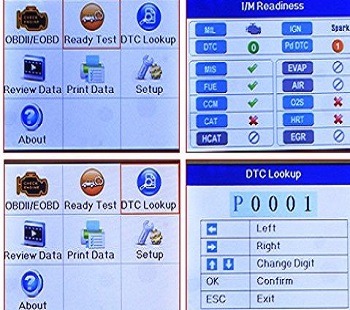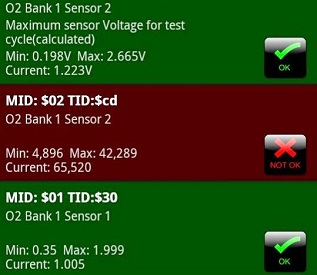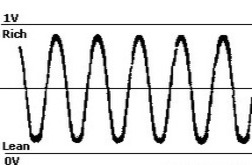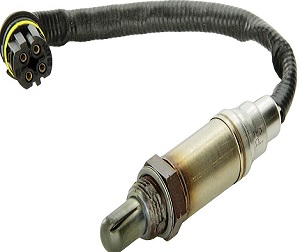Automotive Scan Tool and Diagnosis

Connecting an automotive scan tool to a vehicle, pulling out the codes and resetting the check engine light is one of your shops favorite jobs.
They don’t have to get dirty or bust their knuckles. On top of that, it pays well. This page represents an opportunity to spoil their fun.
Here we’ll talk about how to pick out the right scan tool based on your needs. And why you might want a scanner instead of just a code reader. The difference is, scanners can read the data stream. The code reader will only read and erase stored trouble codes.
As a mechanic I see the value in a tool that does more. However, if you want simple, then the reader is less expensive. Before you decide, let’s see what these cost effective tools can and can’t do.
We’ll also show you how to use it properly to diagnose some of the most common generic trouble codes. Finally, don’t miss the discussion about oxygen sensor codes, diagnostic tips and a video showing how to replace an O2 if it’s needed.
At the bottom is a link to pictures and reviews of scanners I own. Here I picked the Autel 519 enhanced scan tool on the right.
I think it’s a good compromise between cost and features. Since many shops charge a flat rate diagnostic fee of 1 hour to scan a vehicle, the tool might pay for itself on the first use.
Code Reader Type Scan Tools
For as little as $20 you can have your own automotive code reader. Many offer 1 or 2 button operation. It’s not hard to figure out how to use them either.
This means you can perform initial diagnosis when the service engine soon light or check engine light comes on. I would like to mention that most of the scan tools and code readers today come with in-depth operation manuals.
This leaves little to worry about in terms of learning curves. The manuals will explain how to pull and erase codes. They also offer information on what it stands for.
Sometimes codes are intermittent and clearing or erasing them is all that needs to be done to keep the light off for good. If you erase it, and it immediately comes back, or returns in 24 hours of operation, this is considered a hard failure code.
Solving Code Problems with the Data Stream
For this example of reading the comprehensive data stream I’ll give you a very common code.
The P0131 code is one you might find set in the automobile computer memory some day. It stands for oxygen sensor voltage below specification.
I come across the O2 sensor voltage low or high codes all the time. Many mechanics when they see this code just want to go ahead and replace the oxygen sensors.
This may not be the right move. When you pull this code up on your automotive scan tool, the first thing you want to do is reset it and see if it returns.
If the warning lamp comes back on and the code has reset the second thing you do is read the data stream for the individual oxygen sensors.

Reading scan tool data for this code using the collected information from the cars main computer is easier than many would think.
If you have an auto scanner with some power they offer a menu of sensors to observe.
You can also record the information in snap shot mode and review it off the car. Finally, some tools can run a specialized O2 monitor test. At the end of the test it lists the sensor activity and location.
This is followed by a pass or fail grade. If the scan tool has a color screen it will highlight bad parts in red and good ones in green.
Oxygen Sensor Operation

The oxygen sensor voltage should vary quickly from about 200 to 800 mV. The rule of thumb is that the output voltage should go below 500, and above 500 mV in an even pattern.
This is known as the cross counts. This is how many times the voltage crosses the middle specification of 500mv.
If you see a sensor that has a fixed voltage or one that is always below 500. You want to check the wiring to that component. The O2 wiring is underneath the vehicle and is easily damaged by road debris.
Another reason you may have a low or fixed voltage is the oxygen sensor is reading correctly, but the exhaust gases are not in the proper range.
This could relate to a problem on the fuel management side. Meaning the exhaust gases are actually lean or rich due to a failure of a fuel system component. A prime example of this is a leaky fuel injector.
Other common issues like a vacuum leak or an engine misfire can also cause these readings. To clarify my point, if you set an O2 code, it doesn’t always indicate the sensors need replacing. What these codes do indicate is further diagnosis is necessary.
When Do Oxygen Sensors Need Replacing

The exception to this rule is if an automobile has extremely high mileage. Oxygen sensors can start to lose their accuracy at around 100,000 miles.
Again, this doesn’t mean the sensor needs to be replaced, but it’s an indication sensor operation should be checked carefully.
Using the automotive scan tool can be interesting and fun. Furthermore, reading the data stream can be a great learning experience.
Another bonus is the entire diagnostic operation is a clean job. It won’t cover you with grease and no knuckle busting.
In fact, I think it’s near impossible to injure yourself performing the procedure. Bookmark and share this diagnostic page with a friend after watching the video.
I have a wide variety of automotive scanners for home and professional usage. See the ones I own plus a comparison of the features and benefits of each. The next link takes you to reviews of automotive scan tools.
My first page about this subject provides a few more common reasons the check engine light might pop on. Go to the page about auto scan tools.
Up next is the about us page. Find out more about the car mechanic that built this website and find more ways to get car questions answered.
